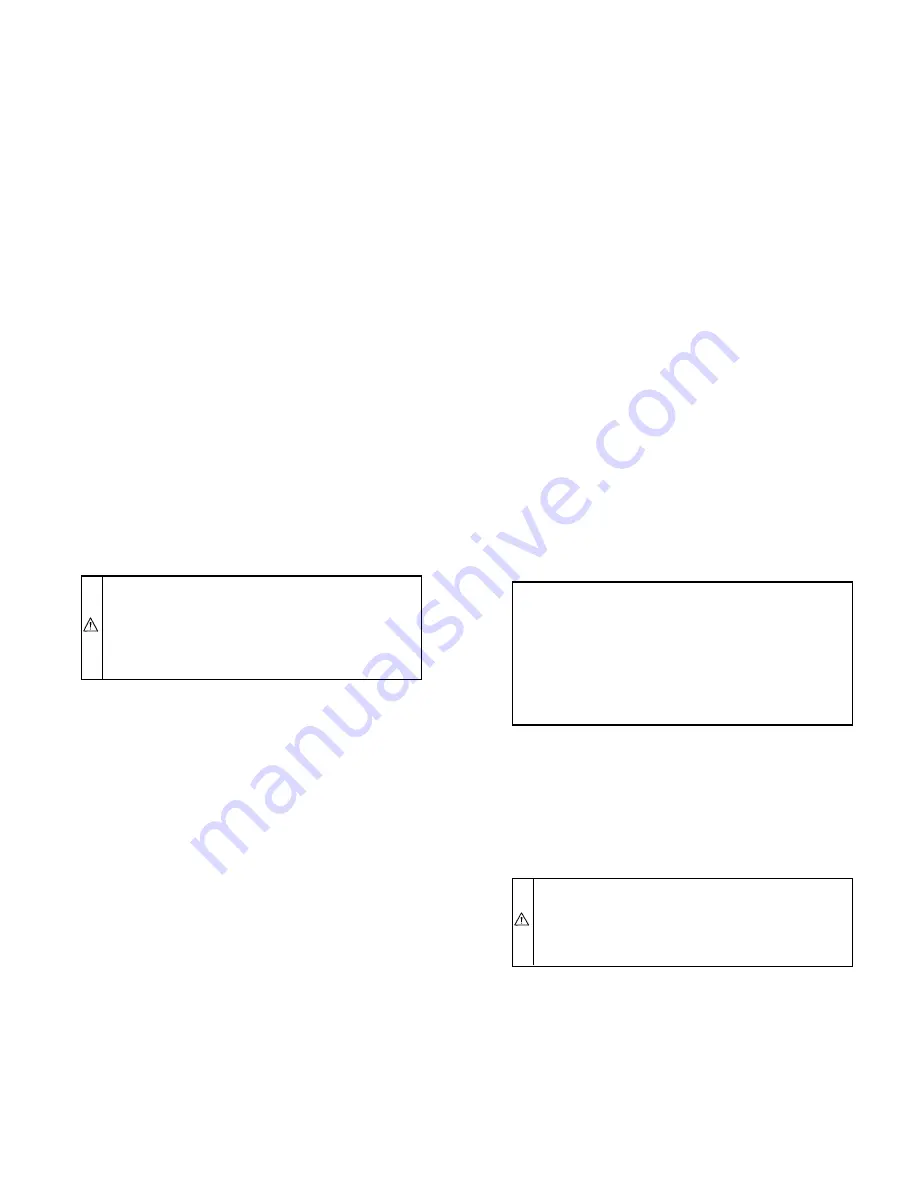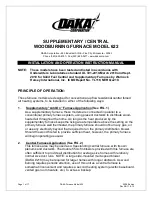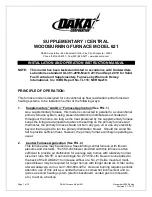
4. Heat pump mode
When installed with a heat pump, the furnace control
automatically changes the timing sequence to avoid long
blower off time during demand defrost cycles. When the
W-Y or W-Y-G thermostat inputs are received at the same
time, the control changes the blower to heating speed or
starts the blower if it was off, and begins a heating cycle.
The blower remains on until the end of the prepurge period,
then shuts off until the end of the ignition warm-up and trial
for ignition periods (a total of 24 sec). The blower then
comes back on at heating speed.
When the W input signal disappears, the control begins the
normal inducer post-purge period and the blower changes to
cooling speed after a 1-sec delay. If the W-Y-G signals
disappear at the same time, the blower remains on for the
selected heating blower off delay period and the inducer
goes through its normal post-purge period. If the W-Y
inputs should disappear, leaving the G signal input, the
control goes into continuous blower and the inducer re-
mains on for the normal post-purge period.
Anytime the control senses false flame, the control locks
out of the heating mode. This occurs because the control
cannot sense the W input due to the false flame signal, and
as a result, sees only the Y input and goes into cooling
mode, blower off delay. All other control functions remain
in standard format.
NOTE:
EAC-1 terminal is energized whenever blower operates.
HUM terminal is only energized when gas valve is energized
C.
Start-up Procedures
1. Purge gas lines—After all connections have been made,
purge the lines and check for leaks.
WARNING:
Never purge a line into a combustion
chamber. Never use matches, candles, flame, or other
sources of ignition for the purpose of checking leakage.
Use a soap-and-water solution to check for leakage.
Failure to follow this warning can cause fire, explosion,
personal injury, or death.
2. Component test—The furnace control board allows all
components, except gas valve, to be run for a short period
of time.
This feature helps diagnose a system problem in case of a
component failure. To initiate component test procedure,
short (jumper) the TEST 1/4-in. quick connect terminal on
control board (adjacent to diagnostic light) and the Com
terminal on thermostat connection block for approximately
2 sec. (See Fig. 9.)
NOTE:
Component test feature will not operate if any thermostat
signal is present at control board.
Component test sequence is as follows.
a. Momentarily jumper TEST and Com terminals until
LED goes off.
b. LED will display previous fault 4 times.
c. Inducer motor operates for 10 sec, then stops.
d. Hot surface ignitor is energized for 15 sec, then de-
energized.
e. Blower motor operates on cooling speed for 10 sec, then
stops.
f. Blower motor operates on heating speed for 10 sec, then
stops.
3. To operate furnace, follow procedures on operating instruc-
tions label attached to furnace.
4. With furnace operating, set thermostat below room tem-
perature and observe that furnace goes off. Set thermostat
above room temperature and observe that furnace restarts.
D.
Adjustments
1. Set gas input rate.
There are 2 methods of adjusting the gas input rate. The
preferred method is by using Table 6 and following the
instructions in item a. The second method is by clocking the
gas meter and using the instructions in item b.
The gas valve regulator has been nominally set at 3.5-in. wc
for natural gas. When adjusting input rate, do not set
manifold pressure above 3.8-in. wc or below 3.2-in. wc.
a. Check gas input rate using Table 6.
(1.) Obtain average yearly heat value for local gas
supply.
(2.) Obtain average yearly specific gravity for local gas
supply.
(3.) Verify furnace model. Table 6 can only be used for
model 480BAV Furnaces.
(4.) Check and verify orifice size in furnace. NEVER
ASSUME
THE
ORIFICE
SIZE.
ALWAYS
CHECK AND VERIFY.
(5.) Find natural gas heat value and specific gravity in
Table 6.
(6.) Follow heat value and specific gravity lines to point
of intersection. Find orifice size and manifold pres-
sure settings for proper operation at given natural
gas conditions.
EXAMPLE:
Heat value 1070
Btu/cu ft specific gravity 0.58
Therefore; Orifice No. 44*
Manifold pressure 3.3-in. wc *The furnace is
shipped with No. 43 orifices.
Therefore, in this example all main burner orifices must be
changed and manifold pressure must be adjusted.
(7.) Proceed to item c to adjust manifold pressure.
b. Check gas input rate by clocking gas meter.
(1.) Obtain average yearly heat value for local gas
supply.
(2.) Check and verify orifice size in furnace. NEVER
ASSUME
THE
ORIFICE
SIZE.
ALWAYS
CHECK AND VERIFY.
CAUTION:
DO NOT redrill burner orifices. Improper
drilling (burrs, out of round, etc.) can cause excessive
burner operating noise and misdirection of burner flames.
This could result in flame impingement on burners and
heat exchanger surfaces, leading to potential failures.
(3.) Turn off all other gas appliances and pilots.
(4.) Start furnace and let run for 3 minutes.
(5.) Measure time (in sec) for gas meter to complete 1
revolution.
(6.) Refer to Table 7 for cu ft of gas per hr.
(7.) Multiply gas rate (cu ft/hr) by heating value (Btu/cu
ft).
—11—


































